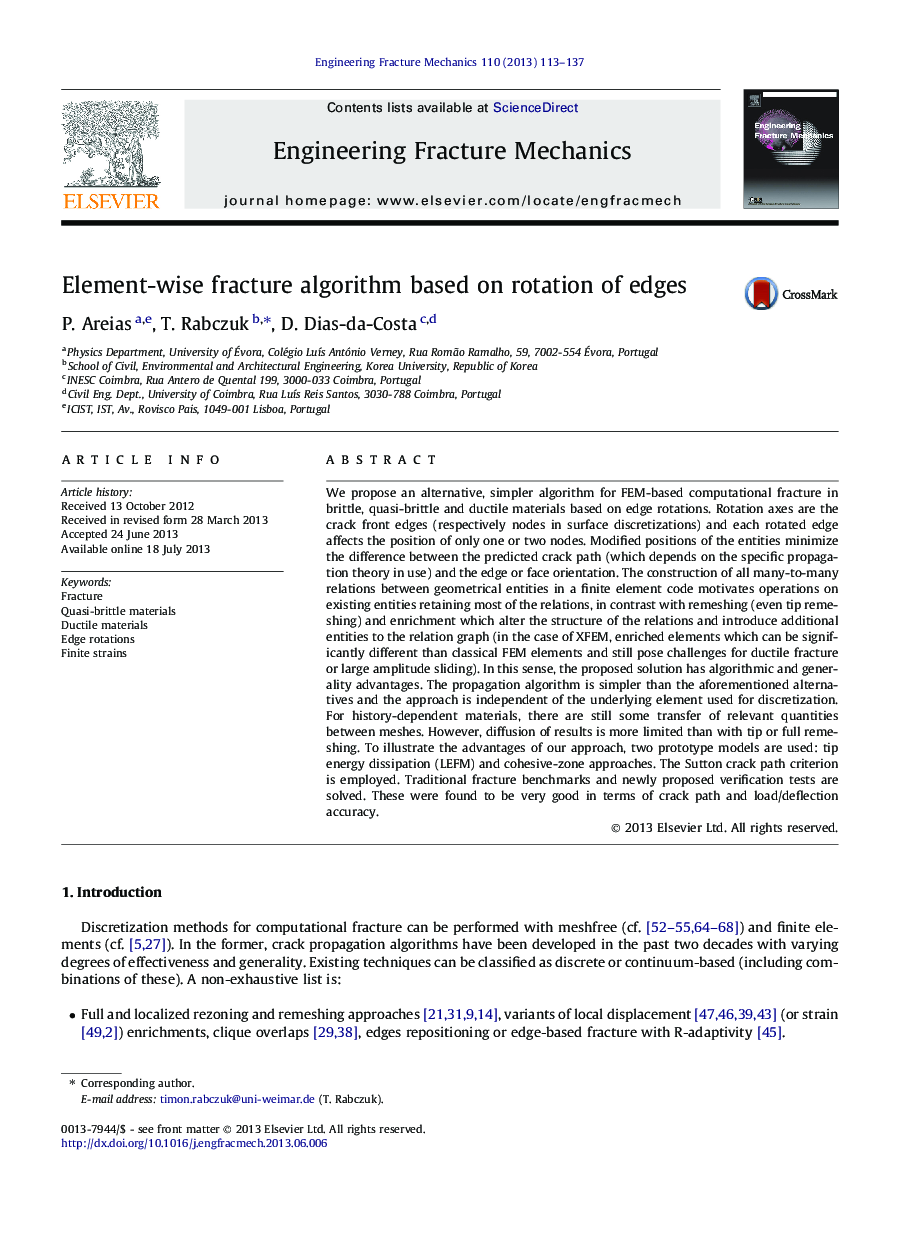| کد مقاله | کد نشریه | سال انتشار | مقاله انگلیسی | نسخه تمام متن |
|---|---|---|---|---|
| 7169928 | 1463115 | 2013 | 25 صفحه PDF | دانلود رایگان |
عنوان انگلیسی مقاله ISI
Element-wise fracture algorithm based on rotation of edges
ترجمه فارسی عنوان
الگوریتم شکست الگویی بر اساس چرخش لبه ها
دانلود مقاله + سفارش ترجمه
دانلود مقاله ISI انگلیسی
رایگان برای ایرانیان
کلمات کلیدی
شکستگی، مواد نیمه شکننده، مواد قابل انعطاف، چرخش لبه، سویه های محدود
موضوعات مرتبط
مهندسی و علوم پایه
سایر رشته های مهندسی
مهندسی مکانیک
چکیده انگلیسی
We propose an alternative, simpler algorithm for FEM-based computational fracture in brittle, quasi-brittle and ductile materials based on edge rotations. Rotation axes are the crack front edges (respectively nodes in surface discretizations) and each rotated edge affects the position of only one or two nodes. Modified positions of the entities minimize the difference between the predicted crack path (which depends on the specific propagation theory in use) and the edge or face orientation. The construction of all many-to-many relations between geometrical entities in a finite element code motivates operations on existing entities retaining most of the relations, in contrast with remeshing (even tip remeshing) and enrichment which alter the structure of the relations and introduce additional entities to the relation graph (in the case of XFEM, enriched elements which can be significantly different than classical FEM elements and still pose challenges for ductile fracture or large amplitude sliding). In this sense, the proposed solution has algorithmic and generality advantages. The propagation algorithm is simpler than the aforementioned alternatives and the approach is independent of the underlying element used for discretization. For history-dependent materials, there are still some transfer of relevant quantities between meshes. However, diffusion of results is more limited than with tip or full remeshing. To illustrate the advantages of our approach, two prototype models are used: tip energy dissipation (LEFM) and cohesive-zone approaches. The Sutton crack path criterion is employed. Traditional fracture benchmarks and newly proposed verification tests are solved. These were found to be very good in terms of crack path and load/deflection accuracy.
ناشر
Database: Elsevier - ScienceDirect (ساینس دایرکت)
Journal: Engineering Fracture Mechanics - Volume 110, September 2013, Pages 113-137
Journal: Engineering Fracture Mechanics - Volume 110, September 2013, Pages 113-137
نویسندگان
P. Areias, T. Rabczuk, D. Dias-da-Costa,
